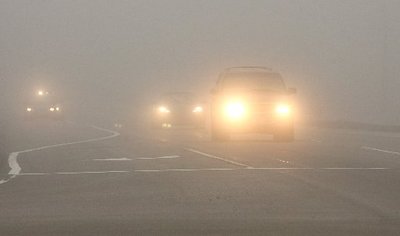Foggy Driving
 |
LONDON -- November 21, 2014: Kiran Devgun from the Institute of Advanced Motorists (IAM) shares her advice with motorists travelling in fog. With outbreaks of fog and mist expected throughout the winter travelling may get extremely difficult. Here are her top tips on how drivers can make their journey as safe as possible.
Clean and clear
The conditions that cause fog also cause windows to mist up. Dirty windows mist more quickly than clean ones, so it is important to keep your windows clean, and then use your wipers and the car heater (and air conditioning if you have it) to clear them. Be sure to clear your wing mirrors too so you can see traffic in them, especially in towns.
Light and bright
Switch on your dipped headlights in misty or foggy conditions. Do not rely on the fact that the lights automatically come on with the engine, as this may not put the rear lights on – and they are equally important. Only use your fog lights if visibility is less than 100 metres, but don’t forget to turn them off when visibility improves. Do not use the full beam lights in fog as this will only obscure your visibility further. Simply use your dipped headlights to help you see further ahead and drive at a speed you can stop at within the distance you can see.
Wash it off
Fog can cause sprays of rain to sit on your windscreen so make sure you use your wipers on the intermittent setting throughout your journey. Keep your windscreen washer topped up with screen wash to rinse off any debris. If the fog is freezing fog, do not use your windscreen washer unless you have non-freezing washer fluid in them, or the screen will be covered in ice.
Take a brake
Driving at a steady pace will ensure you can slow down or brake early enough for any hazards. However, if the vehicle behind you appears closer than it needs to be, you should make sure you are going slowly enough that you are able to slow down or stop without it being sudden. This will allow the car behind to run into you. Keep an eye on your speed throughout and only increase your speed when the road significantly clears. Patches of fog will not always be of the same density – it may get thicker again, so be prepared for that and ready to slow down again.
Spot them if you can
Pedestrians and cyclists are extremely difficult to see in fog, so take extra caution to ensure you can cope with them. Very often they will be wearing dark clothing as opposed to high visibility gear – making it more difficult to spot them easily. Keep your eyes peeled and make sure you reduce your speed, giving yourself enough time to spot them.
Now you see me, now you don’t
In traffic queues the movement of the vehicles can cause the fog to clear to a degree within the queue. But, the driver at the head of the queue does not have that benefit – don’t be tempted to rush past other cars (especially on the motorway) to then suddenly find a wall of fog at the front of the queue.
If you have to stop, whether you’re waiting for help while you’re on the hard-shoulder or on a side-road, you and your car should always be visible to other road users. Have the car’s lights on, use the hazard warning flashers, and wear a high visibility jacket to help other vehicles passing by identify you. Display a warning triangle if you break down – but not on a motorway, where setting it out creates a high risk, and it is likely to be blown over by passing traffic. Without this equipment you might remain unseen and could be involved in an accident.


